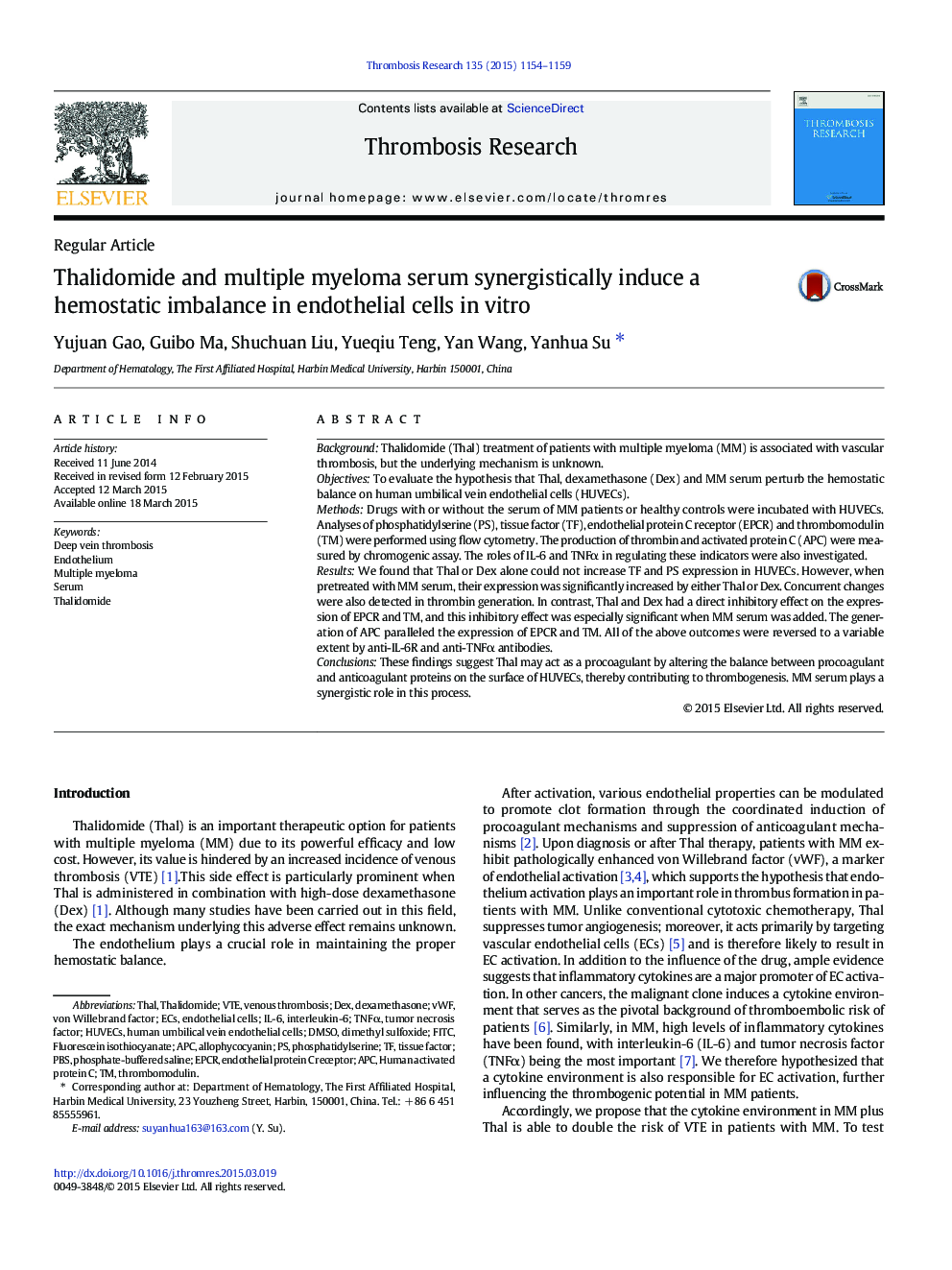| کد مقاله | کد نشریه | سال انتشار | مقاله انگلیسی | نسخه تمام متن |
|---|---|---|---|---|
| 6001821 | 1182957 | 2015 | 6 صفحه PDF | دانلود رایگان |
- Our studies provide new insights into the prothrombotic effects of thalidomide.
- Thalidomide directly affect APC anticoagulant pathways but not procoagulant pathways.
- Addition of MM serum activated procoagulant pathways.
- MM serum strengthen the effect of thalidomide on anticoagulant pathways.
- IL-6 and TNFαare essential for MM serum-induced thromboembolism
BackgroundThalidomide (Thal) treatment of patients with multiple myeloma (MM) is associated with vascular thrombosis, but the underlying mechanism is unknown.ObjectivesTo evaluate the hypothesis that Thal, dexamethasone (Dex) and MM serum perturb the hemostatic balance on human umbilical vein endothelial cells (HUVECs).MethodsDrugs with or without the serum of MM patients or healthy controls were incubated with HUVECs. Analyses of phosphatidylserine (PS), tissue factor (TF), endothelial protein C receptor (EPCR) and thrombomodulin (TM) were performed using flow cytometry. The production of thrombin and activated protein C (APC) were measured by chromogenic assay. The roles of IL-6 and TNFα in regulating these indicators were also investigated.ResultsWe found that Thal or Dex alone could not increase TF and PS expression in HUVECs. However, when pretreated with MM serum, their expression was significantly increased by either Thal or Dex. Concurrent changes were also detected in thrombin generation. In contrast, Thal and Dex had a direct inhibitory effect on the expression of EPCR and TM, and this inhibitory effect was especially significant when MM serum was added. The generation of APC paralleled the expression of EPCR and TM. All of the above outcomes were reversed to a variable extent by anti-IL-6R and anti-TNFα antibodies.ConclusionsThese findings suggest Thal may act as a procoagulant by altering the balance between procoagulant and anticoagulant proteins on the surface of HUVECs, thereby contributing to thrombogenesis. MM serum plays a synergistic role in this process.
Journal: Thrombosis Research - Volume 135, Issue 6, June 2015, Pages 1154-1159
